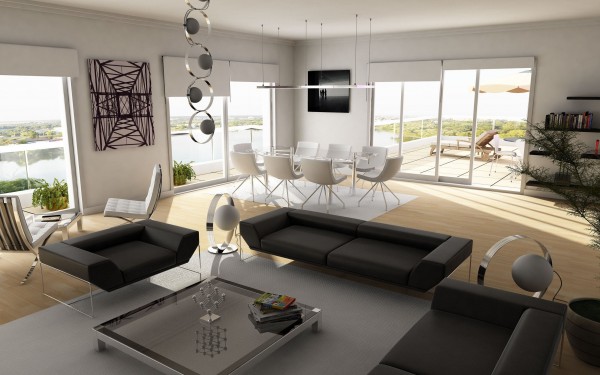Many people wonder if, when and how they should engage an interior designer. With the builder, architect and interior designer all having their own role in the process, it’s not always easy to understand where their responsibilities overlap.
A good interior designer should be able to harness heaps of inspiration and turn it into a room design that feels like you. They know all the rules, but they also know how to stretch and break them.
1. If you’re building a new home
A home doesn’t really feel like yours until you fill it with your own personal touches, and this is where an interior designer can be a huge asset. Unlike builders, interior designers specialize in the aesthetic elements that make your house a home – such as wall colours, textures and furnishings.
If you are planning a new build and want to work with someone who is going to understand your design aesthetic, then it is best to engage an interior designer from the outset. This allows the designer to create a seal tight brief from the start and ensure all design decisions are made with your style, budget and lifestyle in mind.
An interior designer can also help you to determine where it makes sense to spend money on high quality pieces that will last, and where it may be worth saving on less durable products. They will have a knowledge bank of affordable high quality products as well as their own little black book of more exclusive items that will add that extra wow factor to your home.
When you work with an interior designer at the beginning of your project, they are able to keep you on track, provide expert guidance, coordinate delivery dates, and can often pre-order items to get a head start on your renovation. This will help to keep your project on schedule, and reduce overall stress levels during the construction process.
2. If you’re renovating
Transforming your home through design may feel daunting. There’s a misconception that interior designers are fluff finding, money spending know it alls who will drive up your budget and make you want to tear their hair out (or at least that’s what we hear from those who’ve worked with interior designers in the past).
While this is sometimes the case, an experienced designer can actually save you costs by working closely with builders during construction. This is because they have the same renovation jargon and can communicate effectively with contractors to ensure the designs you are after are feasible.
This is particularly important when structural changes are happening like swapping room functions, moving walls or changing the size of rooms, as these can impact on the entire layout. A good interior designer will work with you to explore your design preferences and aesthetic, then gather and coordinate your product selections to create a detailed design plan that’s ready for the contractor to implement.
As a bonus, they can also help you with any interior styling and accessorising that will give your project the finishing touches. This is a great way to add value and make your space truly feel like home. Plus, if any products you’ve chosen are on backorder, your designer will know how to pivot quickly and find alternatives that still suit your style requirements.
3. If you’re extending
While a good builder can offer great solutions when it comes to building your new extension, an Interior Designer will add their unique expertise in delivering a seamless fit between the architecture and the interior. Their ability to see the whole picture and understand that every decision will have a domino effect is invaluable.
They will work with your architect to ensure that all aspects of the design are considered, preventing any ‘hidden costs’ down the line, such as floor electrical sockets or plumbing in the wrong place. Similarly, they will be able to provide suggestions on the best products for your project that will ensure the integrity of the architectural design and suit your taste.
When selecting an interior designer service, it is important to meet them face-to-face before making any decisions. Take the opportunity to ask them about their aesthetic and how they approach a project, as well as find out more about how they collaborate with clients, stay organised and manage projects – what are their processes and do they have any key points of difference to other designers?
It is also worth finding out how they charge – some will charge an hourly rate, while others will calculate their fee based on overall project cost. This allows them to make sure you are getting value for money, as well as keeping their fees competitive in the market.
4. If you’re moving into an existing home
If you’ve recently purchased a home, an interior designer can help you make the best decision for how to remodel or renovate your new space. They can assess whether a few high-end upgrades could boost resale value or turn an ordinary home into your dream house.
Youngblood suggests that homeowners who are looking for an interior designer should do their research to find the right one for them. She advises checking out the designer’s portfolio and asking about their process. “An experienced designer should have a clear, step-by-step process that they can explain to you,” she says. “They should also be able to communicate their vision and style to you in an understandable way.”
Watts concurs, noting that the vetting process is a two-way street and that you’re also evaluating the designer for how well they work with clients and contractors. “A good designer knows how to work with different personalities,” she says. “They know how to read the situation and adapt.”
A good interior designer will keep the big picture in mind for how your project will come together but will also obsess over the details—like making sure there’s enough room for bedside tables in a master bedroom or that the computer outlets in your home office aren’t 7 feet away from your desk. They will also be able to answer questions about building codes and regulations that your architect or contractor may not know, saving you from possible hefty fines down the road.

















